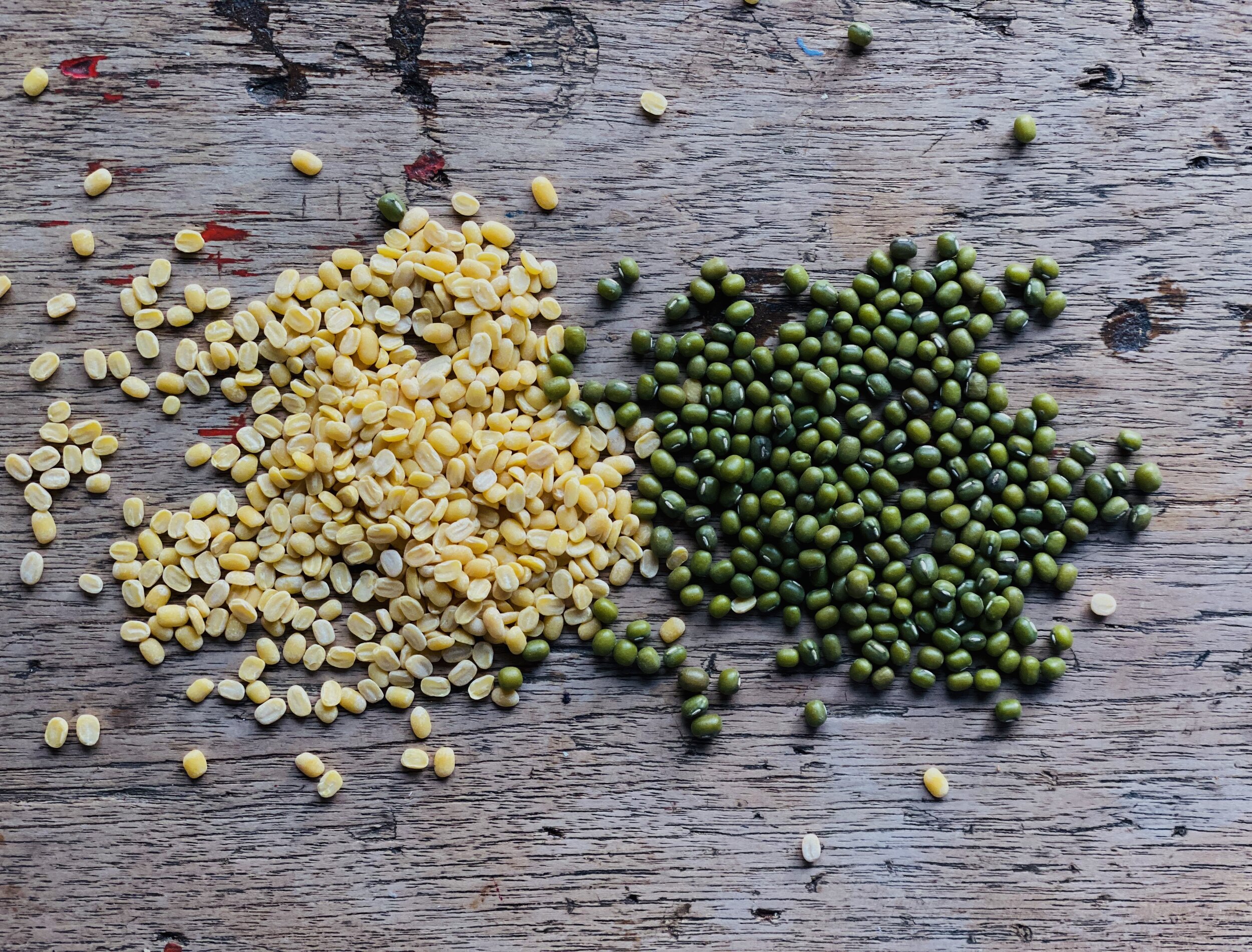ALL ABOUT MUNG DAL
I’ve heard from many of you who are confused about what exactly mung dal is. “What?” you say, “It’s NOT the same thing as yellow split lentils, peas or chana dal?” I hear you — all these yellow split pulses look very, very similar. Unfortunately, though, they’re not exactly interchangeable. It’s not that one wouldn’t work in a dish designed for another, but their prep and cook times are vastly different (and if you know your pulses you’ll detect the subtleties in flavour and texture).
So in an attempt to settle the confusion once and for all, here’s my guide to mung dal. “Dal” or “dahl” or “daal” means “split” in Hindi, so you’ll see a lot of dals in an Asian supermarket which can lead to even more confusion. So head first for the name of the bean which is “mung” or also spelt as “moong.” Mung or moong dal is the split version (which is yellow*) of the whole mung bean (which is green, more readily available, and takes longer to prep and cook), mung dal is the perfect Sattvic detox food in Ayurveda and is a staple in Indian households as part of kitchari, an everyday porridge-risotto and one of my staples.
Not only is mung dal easy to digest, quick cook, and doesn’t need soaking if you decide to use it at the last minute, it’s affordable and long-life (like many other pulses), and is absolutely always in my cupboards and the pulse that I turn to more times than not. Find it in large supermarkets, Asian supermarkets or online. Whole mung beans, which are my next best option (and sometimes of choice as I like to change it up for texture and appearance sometimes) are available at most supermarkets and ideally soaked for 8 hours or overnight before cooking.
To cook mung dal, rinse (then soak if you like) and cook for 30 minutes or until completely tender. That’s it!
To cook whole mung (the green guys), rinse, soak overnight or for 8 hours, drain and cook for 35 minutes or until completely tender.
As for yellow split lentils, peas or chana dal, you should rinse them, soak for 8 hours or overnight, and cook for 45 to 90 minutes depending on what you’re using until completely tender. A different animal, then.
For more on what’s what in the world of beans and lentils, check out this post.
East by West tip: *Just to add to the confusion you might well come across “mung dal” that still has its green jackets on (quite rare) — that’s because while they have been split they haven’t been hulled so slightly harder to digest than the all-yellow mung dal but quicker to cook than the whole.

